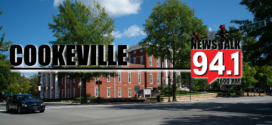A Tennessee Tech Professor part of a new commentary by noted researchers, stressing the importance of geologic mapping for space exploration.
Tennessee Tech Department of Earth Sciences Assistant Professor and Chair Jeannette Luna worked with other academic leaders from 10 other countries to put the commentary together. It was published in the Journal of Geophysical Research. Luna said the piece stresses the need for updated planetary geologic maps.
“We really haven’t made the same level of maps to support the upcoming missions, particularly the Artemis mission that is coming up in the 2030s,” Luna said. “So with this commentary, we were pointing out that those maps are going to be critical for exploration and we want to have those in hand ready for astronauts, engineers, and for anyone that wants to use them over the next decade.”
Luna said she and other academic leaders want to make maps of the Lunar side of the moon or the side that faces away from the Earth. She said the last maps were made during the Apollo missions of the 1960s and 1970s.
Luna said the maps would provide possible locations for a landing site, infrastructure development, and no-go zones for the upcoming moon landing mission.
“We want to go back to the moon and we want to go to the Lunar South Pole and that’s where we may have things like water, ice, and metals that would support a longer-term exploration.”
Luna said geologic maps are made from orbital data. Luna said the data comes from the Lunar Reconnaissance Orbiter which has been orbiting the moon since 2009.
“It’s returning satellite data to the earth that we then use to try to make the maps,” Luna said. “Very similar to satellites that we have an orbit around the Earth.”
Luna said some of the other academic leaders from other countries have worked with NASA before. Luna said the more countries and people who help out with geologic mapping the better.
“Geologic mapping actually takes a lot of time and energy,” Luna said. ” So the more that we can spread that out over multiple countries the easier it is for us to meet the goals and the timeline to support a mission that is coming up in the next five to ten years.”
Luna said she is passionate about geologic mapping as she loves imagining what the landscape on the moon and Mars looks like. Luna said she is very fortunate to be able to turn that passion into a career at Tennessee Tech.
Luna said the next step is an international meeting to bring mappers together to discuss and focus on areas of the moon that need mapping. Luna said the meeting will take place in Rome, Italy in 2027.
 News Talk 94.1/AM 1600 Where The Upper Cumberland Talks
News Talk 94.1/AM 1600 Where The Upper Cumberland Talks







